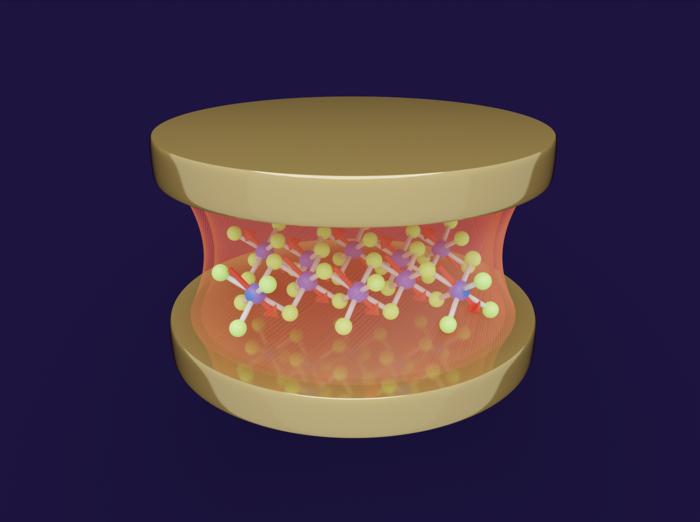Researchers in Germany and the USA have produced the first theoretical demonstration that the magnetic state of an atomically thin material, α-RuCl3, can be controlled solely by placing it into an optical cavity. Crucially, the cavity vacuum fluctuations alone are sufficient to change the material’s magnetic order from a zigzag antiferromagnet into a ferromagnet. The team’s work has been published in npj Computational Materials.

Credit: J. Harms, MPSD
Researchers in Germany and the USA have produced the first theoretical demonstration that the magnetic state of an atomically thin material, α-RuCl3, can be controlled solely by placing it into an optical cavity. Crucially, the cavity vacuum fluctuations alone are sufficient to change the material’s magnetic order from a zigzag antiferromagnet into a ferromagnet. The team’s work has been published in npj Computational Materials.
A recent theme in material physics research has been the use of intense laser light to modify the properties of magnetic materials. By carefully engineering the laser light’s properties, researchers have been able to drastically modify the electrical conductivity and optical properties of different materials. However, this requires continuous stimulation by high-intensity lasers and is associated with some practical problems, mainly that it is difficult to stop the material from heating up. Researchers are therefore looking for ways to gain similar control over materials using light, but without employing intense lasers.
Now theoreticians at the Max Planck Institute for the Structure and Dynamics of Matter (MPSD) in Hamburg, Germany, Stanford University and the University of Pennsylvania (both in the USA) have come up with a fundamentally different approach to change a real material’s magnetic properties in a cavity – without the use of any laser light. Their collaboration shows that the cavity alone is enough to turn the zigzag antiferromagnet α-RuCl3 into a ferromagnet.
Crucially, the team demonstrates that even in an apparently dark cavity, α-RuCl3 senses modifications of the electromagnetic environment and changes its magnetic state accordingly. This is a purely quantum mechanical effect, arising from the fact that within quantum theory the empty cavity (technically called the vacuum state) is never really empty. Instead, the light field fluctuates so that light particles pop in and out of existence which, in turn, affects the properties of the material.
“The optical cavity confines the electromagnetic field to a very small volume, thereby enhancing the effective coupling between the light and the material,” explains lead author Emil Viñas Boström, a postdoctoral researcher in the MPSD Theory Group. “Our results show that carefully engineering the vacuum fluctuations of the cavity electric field can lead to drastic changes in a material’s magnetic properties.” As no light excitation is needed, the approach in principle circumvents the problems associated with continuous laser driving.
This is the first work demonstrating such cavity control over magnetism in a real material, and follows previous investigations into cavity control of ferroelectric and superconducting materials. The researchers hope that designing specific cavities will help them realize new and elusive phases of matter, and to better understand the delicate interplay between light and matter.
Journal
npj Computational Materials
DOI
10.1038/s41524-023-01158-6
Article Title
Controlling the magnetic state of the proximate quantum spin liquid α-RuCl3 with an optical cavity




